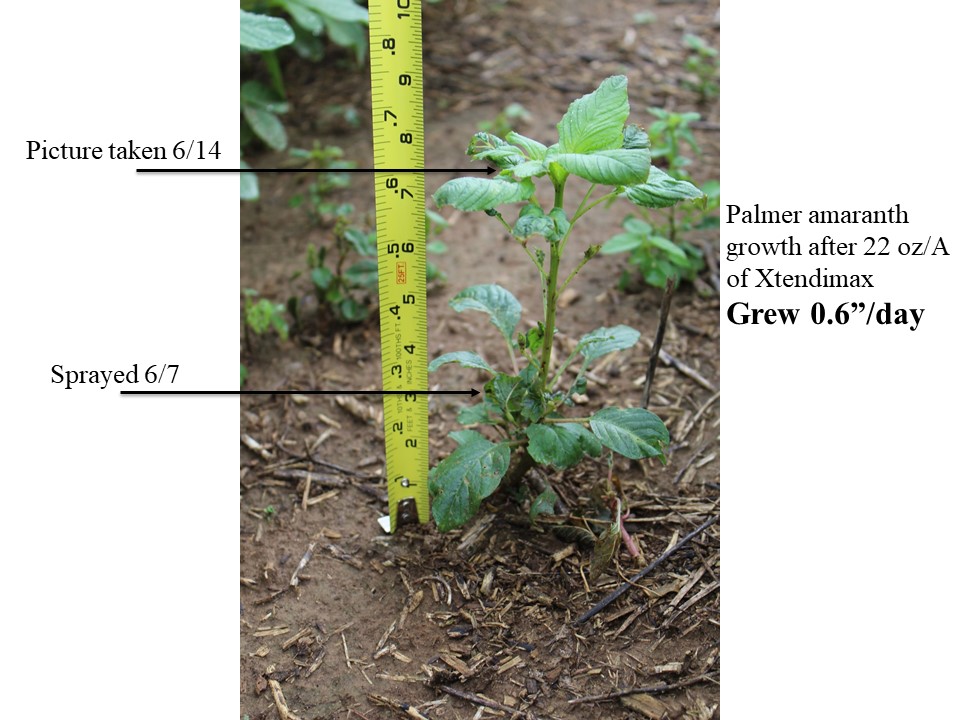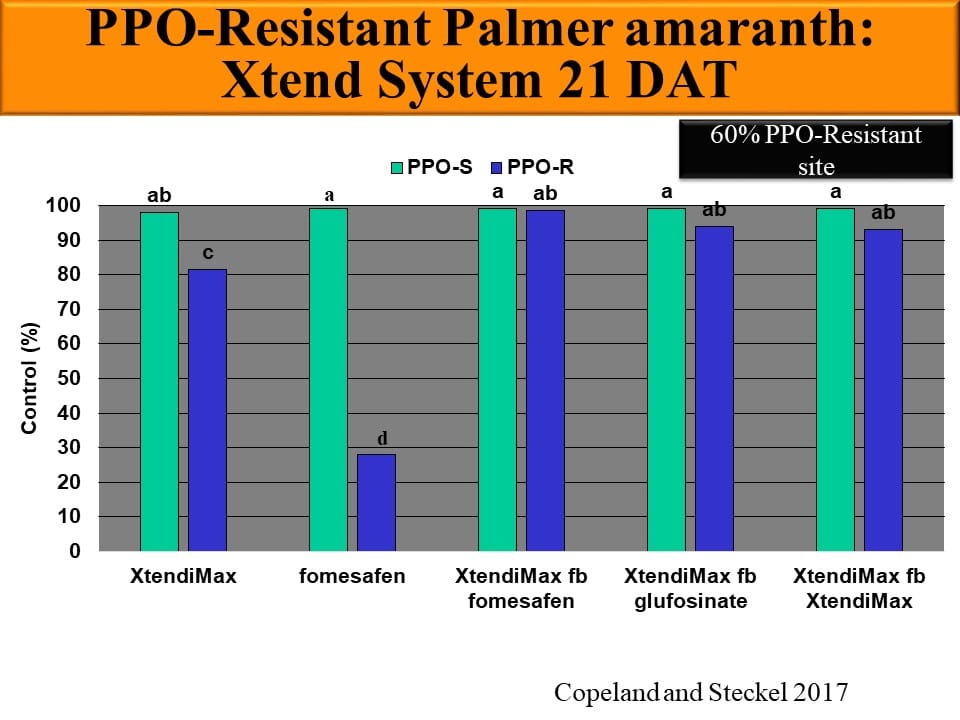A survey sponsored by the Tennessee Soybean Promotion was conducted last summer to determine the percentage of fields that harbored PPO-resistant Palmer amaranth in West Tennessee. We found that 83% of the fields tested had Palmer amaranth infestations that survived a field use rate of Flexstar (fomesafen). Recent field research has shown that these populations are also ALS & glyphosate-resistant.
Additionally, some of these multiple-resistant Palmer amaranth populations are proving to be difficult to control with a number of herbicides. So research was conducted to investigate the effectiveness of various herbicides in controlling PPO-resistant (Flexstar-resistant) Palmer amaranth compared to a location where PPO herbicides were still effective on Palmer.
The herbicides tested were applied to pigweeds that were 2 to 4” in height. XtendiMax (Picture 1) and Enlist Duo provided about 80% control of the Palmer amaranth at the PPO-resistant site compared to 100% control at the PPO-susceptible-site

Other herbicides that did not perform as well as we would like at the PPO-resistant site were Liberty (90% compared to 100% at PPO-S) and Callisto (38% compared 90%). The only herbicide tested that provided 100% control of Palmer amaranth at both sites was atrazine.
It is unclear at this point of how to label this biotype of Palmer amaranth that resides on both sides of the Mississippi River around and just north of Memphis. Is it resistant to all those herbicides? Is it just the background tolerance that has always been there? That is still being determined. The best theory to date is that some kind of metabolic resistance is building in the Memphis area Palmer amaranth biotype that gives the weed some tolerance to a multiple classes of herbicides.
So what is a good approach to control Palmer amaranth in locations where PPO-resistant Palmer amaranth is present? The graph below shows the results of a comparison of the efficacy of herbicides at a PPO-susceptible (PPO-S) Palmer amaranth site and a PPO-resistant (PPO-R) Palmer location (Figure 1). Treatments were applied alone or with a sequential application made 7 days later. Treatments included: XtendiMax at 22 fl. oz./A; Flexstar at a pint/A; XtendiMax followed by Flexstar; XtendiMax followed by Liberty at 32 fl oz./A ; and XtendiMax followed by XtendiMax.

Flexstar (fomesafen) applied alone provided ~28% control at the PPO-R location (Figure 1). Hence, the need for auxin-tolerant crops. Interestingly, Flexstar applied 7 days after the initial XtendiMax application controlled Palmer amaranth (Picture 1) that escaped the initial dicamba application at the PPO-R site. So, even though Flexstar applied alone would not control these Palmer amaranth, it would control them if they were recovering from a dicamba application. We speculate that the initial application of dicamba affected the mechanism of PPO-resistance enough that the Palmer amaranth can then be controlled with a follow-up PPO-inhibiting herbicide.
From a stewardship standpoint, applying an auxin (i.g. dicamba or 2,4-D) in the first POST application is the best strategy. Following that application, 7 to 10 days later, with Flexstar (in soybeans) or Liberty (in cotton) provides good control of any escapes and potentially removes the need for an application of dicamba later in the season. This strategy may help avoid off-target movement and is also good resistance management.

